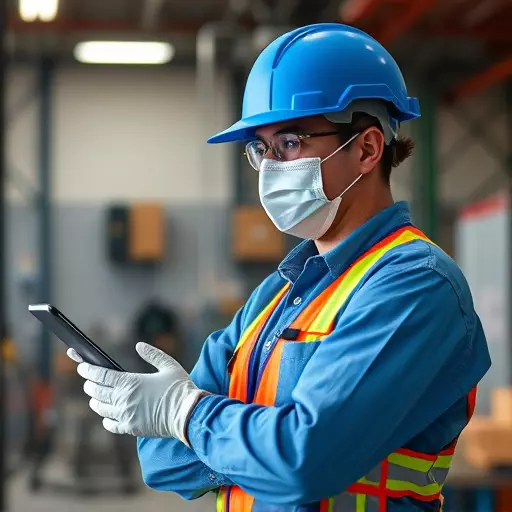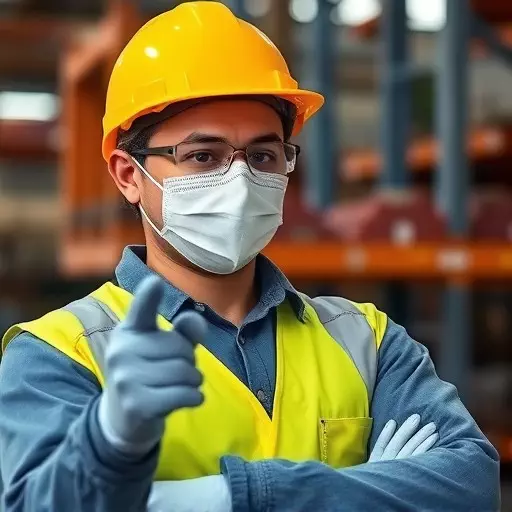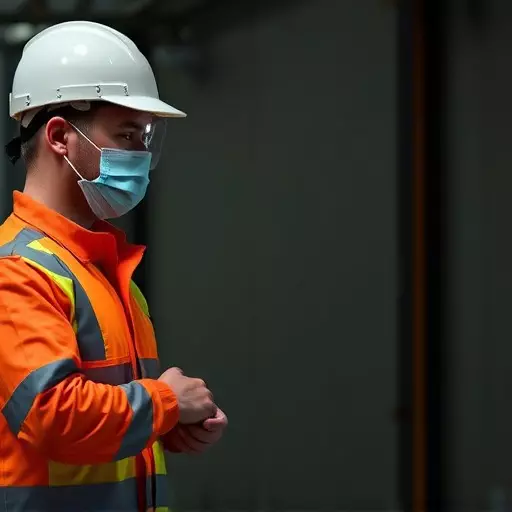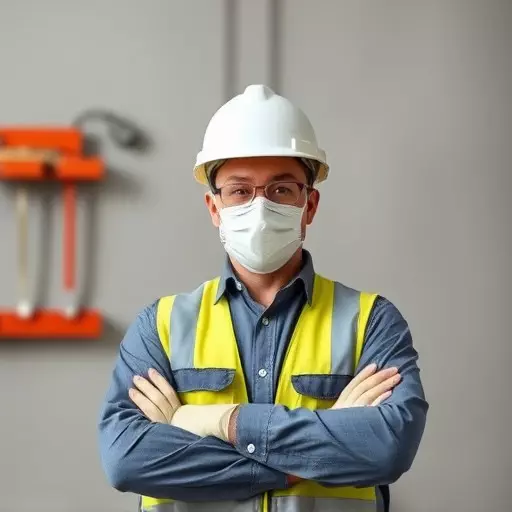“Uncover valuable insights from incident investigations to enhance workplace safety. This article delves into the critical process of understanding root causes, offering a comprehensive guide for occupational safety professionals. We explore ‘occupational safety lessons learned’ from close calls, providing actionable strategies to strengthen safety compliance. Key focus areas include ‘personal protective equipment (PPE) best practices’ and their impact on prevention. Through real-world case studies, we demonstrate how these insights can be applied to create a safer work environment.”
- Understanding Incident Investigations: Uncovering Key Insights
- Occupational Safety Lessons Learned from Close Calls
- Enhancing Safety Compliance Strategies for Prevention
- Personal Protective Equipment (PPE): Best Practices and Impact
- Case Studies: Applying Insights to Improve Workplace Safety
Understanding Incident Investigations: Uncovering Key Insights

Incident investigations are a crucial aspect of any industry focused on occupational safety and risk management. By meticulously examining accidents, near-misses, or safety deviations, organizations can uncover valuable insights that drive improvements in their safety compliance strategies. Through a systematic process, investigators identify root causes, which often lie beyond the immediate factors, and reveal critical lessons learned. These revelations are essential for preventing future occurrences and enhancing overall workplace safety.
One of the key outcomes is the identification of gaps in personal protective equipment (PPE) best practices or training programs. By understanding why an incident happened, companies can implement targeted interventions to ensure employees have the necessary knowledge and resources to perform their tasks safely. This data-driven approach not only improves PPE utilization but also fosters a culture of safety awareness, where every employee takes responsibility for their well-being and that of their colleagues.
Occupational Safety Lessons Learned from Close Calls

Occupational safety professionals often refer to “close calls” as valuable learning opportunities. These are incidents where an employee comes dangerously close to harm but avoids it through luck or quick thinking. Analyzing these close calls offers profound insights into identifying and mitigating risks, with a focus on enhancing occupational safety lessons learned. By examining the root causes, organizations can develop effective safety compliance strategies that go beyond regulatory requirements.
One key takeaway from such incidents is the importance of personal protective equipment (PPE) best practices. Proper use and accessibility of PPE can prevent or mitigate injuries in high-risk scenarios. Organizations should ensure comprehensive training on PPE selection, fitting, and maintenance, fostering a culture where employees actively engage in their own safety. This approach not only promotes individual responsibility but also contributes to an overall safer work environment through consistent safety compliance.
Enhancing Safety Compliance Strategies for Prevention

Personal Protective Equipment (PPE): Best Practices and Impact

Personal Protective Equipment (PPE) plays a pivotal role in ensuring occupational safety and health. The effectiveness of PPE lies in its proper selection, fitting, and consistent use. Best practices involve conducting thorough risk assessments to identify hazards and determine appropriate PPE requirements. Ensuring that workers are trained on how to put on, take off, and maintain their PPE is crucial. This includes inspecting equipment for damage or wear and replacing it as needed.
Adhering to safety compliance strategies by implementing a well-structured PPE program has significant impacts. It reduces the risk of workplace injuries and illnesses, minimizes exposure to harmful substances, and promotes a culture of safety awareness among employees. Lessons learned from incidents where PPE was not utilized or misused underscore the importance of these practices in preventing accidents and saving lives.
Case Studies: Applying Insights to Improve Workplace Safety



